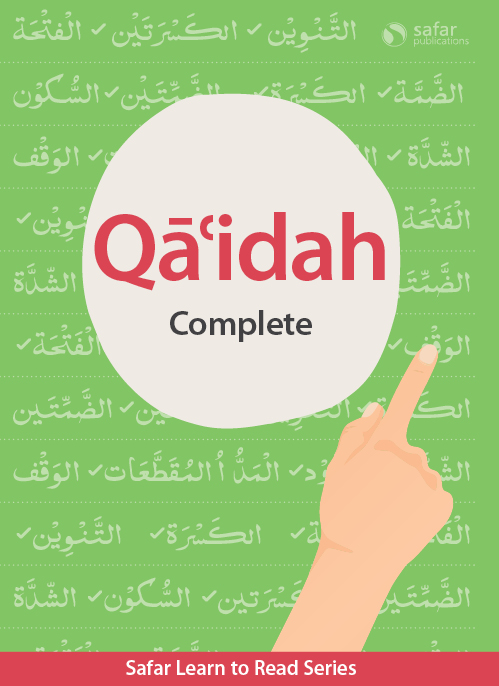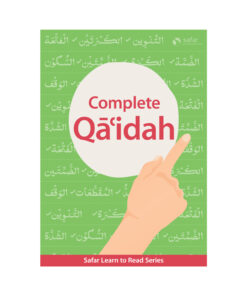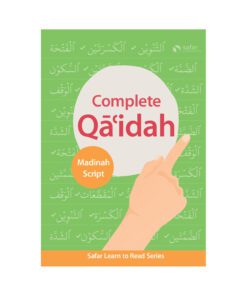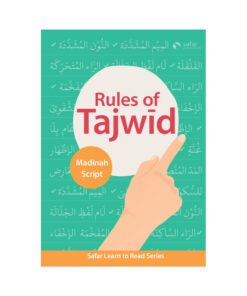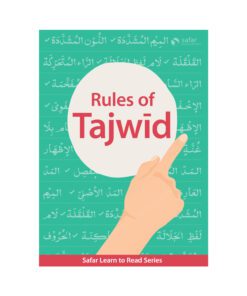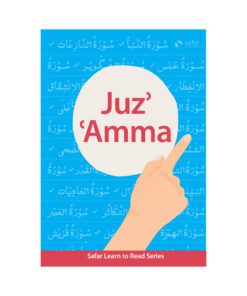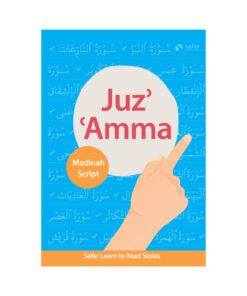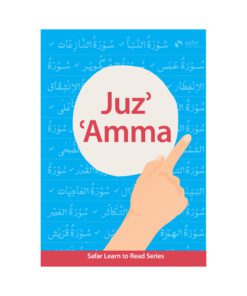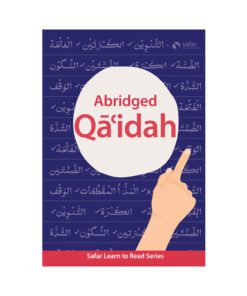Learn to Read Series
Our Learn to Read Series draws from numerous books from around the world. It contains many new and innovative features based on years of collective experience from teaching students at Safar Academy.
Unique features of the Complete Qāʿidah
We found that most other Qāʿidahs do not have any chaptering or breakdown of learning objectives. The students, and sometimes teachers, progress from one exercise to another without realising what the goals behind them were. This lack of breakdown of objective is also unhealthy for the student’s morale as they have no short-term targets to work towards and can lose motivation. Therefore, the Safar Qāʿidah has been divided into several sections with each being called a level. In each level, a new skill or topic will be introduced and covered. The level system has proved to be very effective in motivating students.
The words in the Qur’an are Allah’s (swt) words. This not only makes their recitation more rewarding in the hereafter, but we also believe they have a positive impact on the student’s learning and progress; Allah (Swt) has said, We have made the Qur’an easy to remember… (54:40) In most other Qāʿidahs, we found that many words had crept in which were not found in the Qur’an. This is by no means incorrect, but the words of the Qur’an will always hold superiority.
Some Qāʿidahs have tried to use examples only from the Qur’an but have either not found enough examples for the students to master the level, or they have had to make slight alterations to the writing to make it fit the level. For example, sometimes people have written a standing kasrah instead of a Yā, or taken a word written together in the Qur’an and omitted part of it.
We were not content with all of the above-mentioned, so we carried out a comprehensive survey of the Qur’an, to the best of our abilities, combining direct human efforts and modern technological aids, to find ample examples from the Qur’an for each level.
Occasionally, we have removed the Wāw of from the beginning of some individual words, but have not made any other changes to the text.
The recitation of the Qur’an is a spiritual matter. A person cannot and should not be encouraged by material gains. This is not to say that incentives and rewards should not be offered to children, but the actual motivating factor should be a drive to please Allah(Swt) by following the footsteps of His Messenger (saw). An effort to build Muslim’s consciousness of this should be made from the outset. Therefore, we have included a hadith from the Messenger after each checklist. Each hadith was chosen based on its authenticity and its relevance to Qur’an-learning. The translation of ahadith have been kept simple to cater for younger students. All ahadith have been verified before being included.
Reciting the Qur’an correctly involves many elements that are beyond the remit of a Qāʿidah: students require much practice to build their fluency, as well as time to learn and implement the complex rules of Tajweed. At Safar, we have kept the Qāʿidah as an independent publication at the same time as integrating it into to a comprehensive syllabus that takes a student from his introduction to the sounds of Arabic letters, all the way through to expert recitation. By doing this, teachers, parents and students are able to keep a holistic view of progress and ensure no aspect is neglected.
The ability to recite the Qur’an is dependent on several individual skills; for example, the ability to recognise joined letters, the ability to regulate the length of each vowel, and so on. In our analysis of other available Qāʿidahs, we noticed that most of them contain gaps where certain key elements have not been covered formally and students are expected to guess or understand themselves. Sometimes, the logical sequence of this learning has also been ignored with some elements being presented in inappropriate places. Sometimes, examples contain concepts and elements which have not yet introduced to the students causing confusion and obstacles for the students.
To solve this, each level in the Safar Qāʿidah is a gradual and logical progression from the previous one. An effort has been made to fill any gaps in that exist in other Qāʿidahs, as well as trying to not allow any elements not yet formally covered into the examples. To add to this, students are given mixed exercises at the end of each level, to revise and recap everything they have learned previously.
As the Qur’anic script is hand-written, the same letter has been written in many different ways for style and variation. Many teachers have observed that children often find it difficult to recognise these various forms and styles when they eventually read the Qur’an, if not in the Qāʿidah itself. To tackle this, we have added a level, Advanced Letter Recognition, in which each method of writing is introduced separately with Qur’anic examples. Graphics, where necessary, have been used to break down the writing; for letters learners find difficult to read, is broken down and explained using graphics. This is one of the unique and effective additions to the Safar Qāʿidah.
More features
To help parents, teachers and students keep track of progress, there is a checklist at the end of each level, listing what skills have been covered so far. This helps to maintain an informed approach to the study of the Qāʿidah and helps avoid students merely making their way through with no consciousness of the aims and objectives behind what they are doing. This also serves as an aid to teacher, parents and examiner who may listen to the student read.
It is well-known that learning to read the Qur’an is a practical matter with limited theoretical elements. Therefore, the more practice a student makes, the better his recitation will be and the faster he will progress. To monitor the student’s practice, we have incorporated a diary section with each page where parents can record how much practice the student has made throughout the week. Ample space has also been given for parents or teachers to make notes.
Keeping track of a student’s progress is also essential for all involved so spaces have been allocated for teachers to write the homework due-date and note when the student had passed.
In selecting examples for each exercise, certain considerations have been taken, like not allowing too many examples to follow a single vocal pattern. This is to avoid students guessing the pronunciation of an example based on the last one, when they are supposed to work out each example separately.
We have also tried to make sure that not a single example contains any elements that they have not yet covered. For example, no examples will have fatḥahs until fatḥah has been formerly introduced. Likewise, examples containing ikhfā have been left out until the student has learned about ikhfā, and so on.
We then arranged the examples in each exercise so they progress from the easiest to the most difficult, taking into consideration the number of letters or words in the examples as well as the weight and difficulty of the letters.
We have tried to include the sufficient practice in each level for the average student to master it. This is not always enough, however, and many students require extra practice. Sometimes, in group-learning situations, some students may finish early and have to wait for others in their group to complete the level. To help both of these situations, we have added an appendices at the back of the Qāʿidah. This also helps keep the main exercises as short as possible to avoid time being wasted.
Inevitably, students make mistakes when they are learning and when they read to the teacher, but the types of mistakes made are vast an varying. We have divided the common mistakes into six categories. A certain letter denotes each of these mistake categories. A key for the mistakes is printed on the bottom of each study-page and a chapter with instructions on using the code included at the beginning of the Qāʿidah. By using this code, students, teacher and parents can be reminded of what type of mistake was made in a particular word or letter.
There are several prints of the Qur’an based on the narration of Imām Ḥafs from Imām ʿĀsim –may Allah e have mercy on both. One of the most popular, globally, is the 13-line print which is most common amongst Muslims who do not speak Arabic, due to the simplicity and clarity of the script, as well as certain phonetic marks to aid those unfamiliar with Arabic grammar. The print is known as the Taj Company print as they are believed to be the original commissioners of the transcription. It is also referred to as the South African Qur’an due to the Waterval Institute’s reprinting and vast distribution in the Western world.
We chose this script, as have many other Qāʿidahs. A problem faced in this regard, however, is that a computer font is usually used to compose the Qāʿidah or a calligrapher is assigned to transcribe all the examples. At Safar Academy, we have tried both methods in the past but have found that neither prepares the students properly to read Qur’anic script because of the nuances in the calligraphy. Therefore, we decided to use the actual hand-written words from the 13-Line Qur’an – may Allah (Swt) reward all those who were involved in its transcription.
Sample Complete Qaidah

